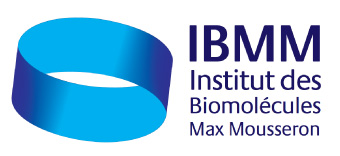Magnetic resonance studies of solid-state ionic conductors
Séminaire Chimie ED459 / FR3105 Balard
Prof. Gillian R.
Le Jeudi 07 Novembre 2019 à 14h
ENSCM, Amphithéâtre Godechot (campus Balard, 240 av. Émile-Jeanbrau)
Date de début : 2019-11-07 14:00:00
Date de fin : 2019-11-07 15:15:00
Lieu : ENSCM amphi Godechot (campus Balard, 240 av E. Jeanbrau)
Intervenant : Prof. Gillian R.
McMaster University, Hamilton ON, Canada
Understanding mechanisms and trends of Li mobility, diffusion, and aggregation in Lithium Ion Batteries (LIBs) is of paramount importance in order to characterize the properties of electrodes and electrolytes in functioning cells. Similarly, properties of proton-conducting solid-acids must be understood in order to properly utilize these materials in fuel cells (FCs). In both cases, the properties of the conducting ions can be specifically addressed using magnetic resonance imaging and spectroscopy.
This talk will give an overview of the applications of magnetic resonance techniques to such materials, using both ex situ studies of parent materials, as well as in situ studies on functional electrochemical cells. Our group have studied several Li+ and H+ conducting solid-state electrolyte and electrode materials, utilizing a range of magnetic-resonance strategies to compare and quantify ion transport processes. For example, 1H double quantum and exchange ssNMR reveals different exchange rates for pathways within the popular solid acid, rubidium di-hydrogen phosphate. Additionally, our newest work in solid-electrolytes, which relies on 7Li spectroscopy acquired at 20 T magnetic field strength, paired with pulsed-field gradient diffusion measurements, acquired under ultra-high gradient strengths. These methods reveal both the number of local environments involved in exchange, and the diffusion timescales, as a function of temperature. These methods, appropriate for solid-state electrolytes, are compared with our earlier work on in situ studies of concentration gradients in solution-state electrodes, and within graphite electrodes.
Finally, newly developed in situ NMR technique that can monitor both the anode and cathode simultaneously has shown great promise for tracking the Li distribution in a full cell, as well as identifying reasons for capacity loss that are not readily available from bulk electrochemical analyses. This is achieved through a cell that is designed to perform under fast magic-angle spinning (MAS) conditions. The state of charge, metallic Li plating and SEI formation was captured for the first charge/discharge cycle of a full electrochemical cell (LiCoO2/graphite). The spectral resolution has been enhanced to the extent that different chemical species that are usually overlapped in NMR analyses are distinctly identifiable.
Contact local ICGM : Dr. Danielle
